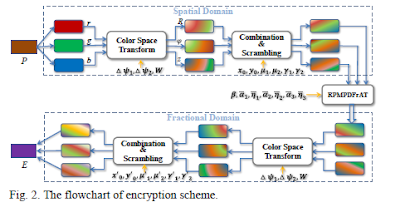A Comprehensive Study on Social Network Mental Disorders Detection via Online Social Media Mining
Aim: To automatically identify SNMD patients at the early stage according to their OSN data with a novel tensor model that efficiently integrate heterogeneous data from different OSNs.
Existing System: The SNMD data from different OSNs may be incomplete due to the heterogeneity (drawback). For example, the profiles of users may be empty due to the privacy issue, different functions on different OSNs (e.g., game, check-in, event), etc.
Proposed System: propose a machine learning framework, namely, Social Network Mental Disorder Detection (SNMDD), that exploits features extracted from social network data to accurately identify potential cases of SNMDs. The paper also exploits multi-source learning in SNMDD and propose a new SNMD-based Tensor Model (STM) to improve the accuracy.
Advantage: propose a novel tensor-based approach to address the issues of using heterogeneous data and incorporate domain knowledge in SNMD detection.
Objectives:
· to explore data mining techniques to detect three types of SNMDs.
· to explore multiple data sources (i.e., OSNs) in SNMDD, in order to derive a more complete portrait of users’ behavior and effectively deal with the data sparsity problem.
· to employ tensor decomposition to extract common latent factors from different sources and objects.
Literature survey:
Internet Addiction Disorder (IAD) is a type of behavior addiction with the patients addicted to the Internet just like those addicting to drugs or alcohol [3].
King et al. [40] investigate the problem of simulated gambling via digital and social media to analyze the correlation of different factors, e.g., grade, ethnicity.
Li et al. [41] examine the risk factors related to Internet addiction. Kim et al. [42] investigate the association of sleep quality and suicide attempt of Internet addicts.
Research indicates that young people with narcissistic tendencies and shyness are particularly vulnerable to addiction with OSNs [6] [7].
Chang et. al [43] employ an NLP-based approach to collect and extract linguistic and content-based features from online social media to identify Borderline Personality Disorder and Bipolar Disorder patients.
Saha et al. [44] extract the topical and linguistic features from online social media for depression patients to analyze their patterns. Choudhury et al. [45] analyze emotion and linguistic styles of social media data for Major Depressive Disorder (MDD).
support vector machine, which has been widely used to analyze OSNs in many areas [11], [12].
Caballero et al. [8] estimate the probability of mortality in ICU by modeling the probability of mortality as a latent state evolving over time.
Zhao et al. [9] propose a hierarchical learning method for event detection and forecasting by first extracting the features from different data sources and then learning via geographical multi-level model.
Methodology:
The propose a two-phase framework, called Social Network Mental Disorder Detection (SNMDD), as shown in Figure 1. The first phase extracts various discriminative features of users, while the second phase presents a new SNMD-based tensor model to derive latent factors for training and use of classifiers built upon Transductive SVM (TSVM) [13].
First Phase: formulate the task as a semi-supervised classification problem to detect three types of SNMDs [1]:
i)Cyber-Relationship Addiction, which shows addictive behavior for building online relationships;
ii) Net Compulsion, which shows compulsive behavior for online social gaming or gambling; and
iii) Information Overload, which is related to uncontrollable surfing.
extract and analyze the following crucial categories of features from online social networks(OSNs):
1)social comparison,
2) social structure,
3) social diversity,
4) parasocial relationships,
5) online and offline interaction ratio,
6) social capital,
7) disinhibition,
8) self-disclosure, and
9) bursting temporal behavior. These features capture important factors or serve as proxies for SNMD detection.
Two key challenges exist in design of SNMDD: i) we are not able to directly extract mental factors like what have been done via questionnaires in Psychology and thus need new features for learning the 4 classification models;4 ii) we aim to exploit user data logs from multiple OSNs and thus need new techniques for integrating multi-source data based on SNMD characteristics.
Second Phase: SNMD-based Tensor Model (STM) to deal with this multi-source learning problem in SNMDD. Advantages of our approach are: i) the novel STM incorporates the SNMD characteristics into the tensor model according to Tucker decomposition; and ii) the tensor factorization captures the structure, latent factors, and correlation of features to derive a full portrait of user behavior.
Advantage: present a new tensor model that not only incorporates the domain knowledge but also well estimates the missing data and avoids noise to properly handle multi-source data.
Conclusion: proposed SNMDD framework that explores various features from data logs of OSNs and a new tensor technique for deriving latent features from multiple OSNs for SNMD detection. This work represents a collaborative effort between computer scientists and mental healthcare researchers to address emerging issues in SNMDs
Future Enhancement:
Plan to study the features extracted from multimedia contents by techniques on NLP and computer vision. Also plan to further explore new issues from the perspective of a social network service provider, e.g., Facebook or Instagram, to improve the well-beings of OSN users without compromising the user engagement.
For additional details comment below with requirements.




Module description and algorithm used in the comprehensive Study on Social Network Mental Disorders Detection via Online Social Media Mining
ReplyDelete